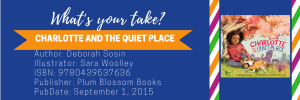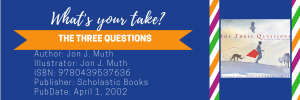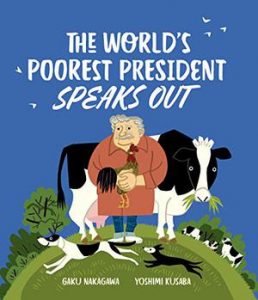 José Mujica is no ordinary president. He lives on a small farm with his wife and three-legged dog. He drives a light blue, 1987 VW Bug. When he served as president of Uruguay from 2010 to 2015, Mujica donated 90% of his $12,000 per month salary to charities that worked to support small businesses and those living in poverty. It’s no wonder the citizens of Uruguay affectionately called him “Pepe.” But others around the world called Pepe Mujica “the world’s poorest president.” Pepe dismisses this nickname stating, “I don’t feel poor. Poor people are those who only work to try to keep an expensive lifestyle and always want more.” Readers should know that Pepe is also known for unapologetically speaking his truth even if his words cause discomfort. Continue reading
José Mujica is no ordinary president. He lives on a small farm with his wife and three-legged dog. He drives a light blue, 1987 VW Bug. When he served as president of Uruguay from 2010 to 2015, Mujica donated 90% of his $12,000 per month salary to charities that worked to support small businesses and those living in poverty. It’s no wonder the citizens of Uruguay affectionately called him “Pepe.” But others around the world called Pepe Mujica “the world’s poorest president.” Pepe dismisses this nickname stating, “I don’t feel poor. Poor people are those who only work to try to keep an expensive lifestyle and always want more.” Readers should know that Pepe is also known for unapologetically speaking his truth even if his words cause discomfort. Continue reading


Authors’ Corner: LeUyen Pham
Megan McCaffrey, Governor’s State University in Chicago, Chicago, IL
 LeUyen Pham prides herself on providing multicultural representation in her books whenever possible or, as she has stated, to make sure children do “not feel excluded.” She, more than most, can firsthand relate to more than one culture and believes children should see themselves in books. LeUyen was born in Saigon, Vietnam, in 1973. She and her family were several of the last refugees on the roof of the United States (US) Embassy rescued by helicopter during the fall of Saigon in 1975. She was only 2 years old at the time Saigon fell and her family escaped. Her family made their way to the United States via several stops along the way with the help of a sponsor and settled in Temple City, California, a suburb of Los Angeles. Besides both her Vietnamese and American culture, she also has strong French connections. The most immediate connection being her mother who is half Vietnamese half French. Her husband is French graphic artist Alexandre Puvilland and her two children with Puvilland attend a French School in Los Angeles. Another French connection comes from her own Vietnamese heritage; Vietnam was occupied by the French from the late 1800s until the mid-1950s, leaving its cultural marks throughout the larger Vietnamese culture and most likely LeUyen’s parents lives. Hence, LeUyen is not only part of multiple cultures but also is also part of a culture that she did not see represented in children’s literature while growing. Continue reading
LeUyen Pham prides herself on providing multicultural representation in her books whenever possible or, as she has stated, to make sure children do “not feel excluded.” She, more than most, can firsthand relate to more than one culture and believes children should see themselves in books. LeUyen was born in Saigon, Vietnam, in 1973. She and her family were several of the last refugees on the roof of the United States (US) Embassy rescued by helicopter during the fall of Saigon in 1975. She was only 2 years old at the time Saigon fell and her family escaped. Her family made their way to the United States via several stops along the way with the help of a sponsor and settled in Temple City, California, a suburb of Los Angeles. Besides both her Vietnamese and American culture, she also has strong French connections. The most immediate connection being her mother who is half Vietnamese half French. Her husband is French graphic artist Alexandre Puvilland and her two children with Puvilland attend a French School in Los Angeles. Another French connection comes from her own Vietnamese heritage; Vietnam was occupied by the French from the late 1800s until the mid-1950s, leaving its cultural marks throughout the larger Vietnamese culture and most likely LeUyen’s parents lives. Hence, LeUyen is not only part of multiple cultures but also is also part of a culture that she did not see represented in children’s literature while growing. Continue reading

WOW Recommends: The Most Beautiful Thing
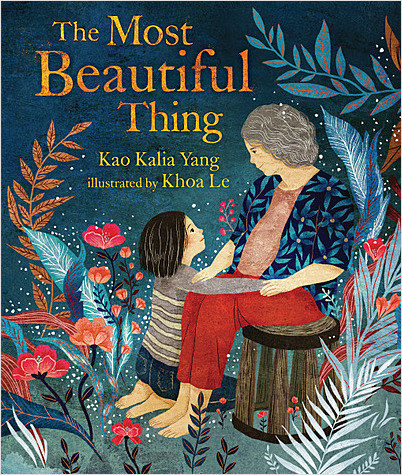 There are many things beautiful about The Most Beautiful Thing by Kao Kalia Yang. First, it shares the story of a young refugee from Laos and her grandmother. Then it has richly-colored illustrations. But the most beautiful thing might well be different for each reader. It is an emotional refugee story, a narrative of the challenge of poverty, a theme of acceptance, and a reflection on how beauty is identified. Each can be found in this sensitively told story that evolves from the author’s personal experiences. For me, the most beautiful thing about the book is the intergenerational relationship that reveals a mutual bond of love, respect and admiration, setting this book apart from many others that tell of relationships between children and grandparents. One quote represents the tone of this relationship: Continue reading
There are many things beautiful about The Most Beautiful Thing by Kao Kalia Yang. First, it shares the story of a young refugee from Laos and her grandmother. Then it has richly-colored illustrations. But the most beautiful thing might well be different for each reader. It is an emotional refugee story, a narrative of the challenge of poverty, a theme of acceptance, and a reflection on how beauty is identified. Each can be found in this sensitively told story that evolves from the author’s personal experiences. For me, the most beautiful thing about the book is the intergenerational relationship that reveals a mutual bond of love, respect and admiration, setting this book apart from many others that tell of relationships between children and grandparents. One quote represents the tone of this relationship: Continue reading

The Tucson Festival of Books Goes Virtual in 2021
The Tucson Festival of Books goes virtual March 6-7, 2021! The Children’s and Teen sessions will be available on-line and live at 9 a.m., 11 a.m., 1 p.m. and 3 p.m. Arizona time. Worlds of Worlds: Center of Global Literacies and Literatures has been involved with the festival since its inception, and we will continue this year as your guide. Download a PDF version of the schedule of the Children’s and Teen sessions. For an accessible schedule, visit tucsonfestivalofbooks.org.

WOW Recommends: Brother’s Keeper

North Korean, 1950. What the world comes to know as the Korean War is imminent. Determined to escape the North Korean regime during the chaotic days at the onset of conflict, the Pak family joins the stream of evacuees headed to South Korea while they feel they have a chance to escape. But then there is a napalm bombing, and the throng of refugees is thrown into turmoil. What happens next is chronicled in Brother’s Keeper, a piece of historical fiction for middle grade students. Continue reading

Hidden Stories of Hope: Relevant Picture Book Biographies for Science Classrooms
by Karen Matis with Charlene Klassen Endrizzi
In our last WOW Currents entry of the month, Charlene and I consider the challenges of supporting science preservice teachers. In past weeks we examined the usefulness of Young Adult picture book biographies to humanize complex content in ELA, history and math classes. We believe middle school learners deserve occasions to study change agents whose lives demonstrate a bridge between complex school content and purposeful use of this content in everyday lives. Continue reading
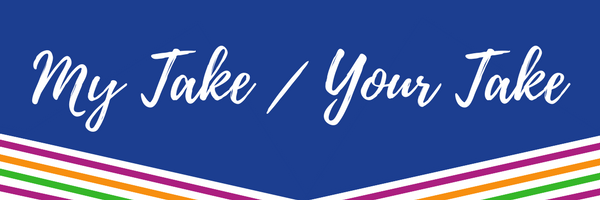
MTYT: Charlotte and the Quiet Place
by Seemi Aziz, University of Arizona, Tucson, AZ, and Melissa Wilson, Leeds Trinity University, Leeds, West Yorkshire, UK
Rounding off the first month of 2021, we discuss Charlotte and the Quiet Place and take one last look at how mindfulness may help us during this stressful times.
The texts discussed this month may offer readers (and listeners) some peace during these most turbulent times. They are books that thematically deal with the concept of mindfulness through a narrative. There are many new books being marketed for children that are guides to mindfulness practices. A quick browse on Amazon yields pages of “activity books” that offer to help children process feelings, step-by-step manuals for doing meditation with children, and even books to help teach children “growth mindsets”.
Sometimes the best way to deal with a difficult present and an uncertain future is to lose yourself in someone else’s story. Through reading, or being read to, you can experience different ways of living on a deep level. These experiences can give much succor and “practice runs” at figuring out how to live a life well.

Hidden Stories of Determination: Relevant Picture Book Biographies for Math Classrooms
by Charlene Klassen Endrizzi and Karen Matis
This month of WOW Currents invites readers to examine adolescent picture book biographies providing relevant disciplinary points of connection for middle school math learners. Three books focus on determined female mathematicians with an additional text featuring a football player of note who pursued his passion for art following a professional sports career. Continue reading

MTYT: The Three Questions
by Seemi Aziz, University of Arizona, Tucson, AZ, and Melissa Wilson, Leeds Trinity University, Leeds, West Yorkshire, UK
This week Seemi and Melissa give their takes on a classic picturebook, The Three Questions, that helps children understand mindfulness.

Hidden Stories of Change: Relevant Biographies and Non-fiction for the History Classroom
by Charlene Klassen Endrizzi with Karen Matis
This week we continue our exploration of “Hidden Stories” by revealing historical personalities too often overlooked. We zero in on adolescent books highlighting change agents chosen by history preservice teachers.
“I took many history courses in high school and college. Why have I never heard of these events?” (Makenzie, history major). This refrain, in response to Isabel’s Learning Invitation on the nonfiction book The grand mosque of Paris: A story of how Muslims rescued the Jews during the Holocaust (Ruelle, 2010), became a familiar response as we delved further into our hidden stories exploration. Continue reading



